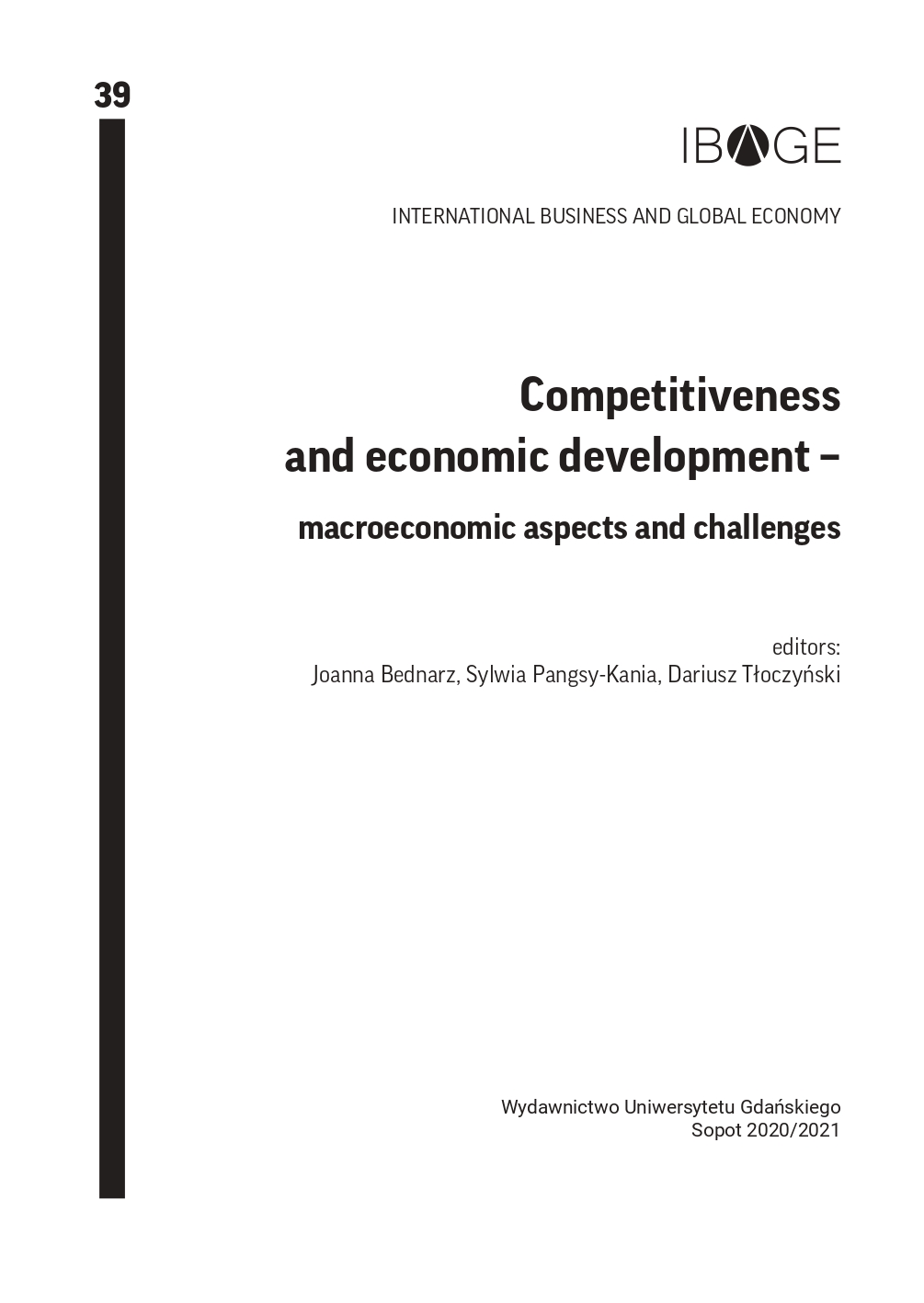Regional competitiveness of selected Sub-Saharan African economies – an application of stochastic production frontier analysis
Słowa kluczowe:
technical efficiency, stochastic production frontier, Cobb-Douglas production function, time-varying decay model, truncated normal distributionAbstrakt
This article evaluates the competitiveness of 44 selected Sub-Saharan African economies by modelling the efficient utilization of the factors of production. It deviates from the traditional approach and methods for a competitiveness study and opts to utilize the econometric methodology of stochastic production frontier, using Cobb-Douglas production function to estimate time-invariant and time-varying decay effects efficiency and panel data for 1980–2019. The results show that the selected SSA countries operated on an average score of 40% and 26% efficiency levels, when analyzing the data under time-invariant and time-varying decay models respectively. Highly competitive countries ranked higher with respect to efficiency, incl. Equatorial Guinea, Mauritius, South Africa, Eswatini, and Gabon. At the bottom of the scale were Congo, Liberia, Burundi, Central Africa, and Niger.
Downloads
Bibliografia
Ahmadzai H., 2017, Crop diversification and technical efficiency in Afghanistan: Stochastic frontier analysis, nottingham.ac.uk/credit/documents/papers/2017/17-04.pdf [access: 18.03.2022].
Baten A., Kamil A.A., Fatama K., 2009, Technical efficiency in stochastic frontier production model: An application to the manufacturing industry in Bangladesh, Australian Journal of Basic and Applied Sciences, no. 2.
Battese G.E., 1992, Frontier production functions and technical efficiency: A survey of empirical applications in agricultural economics, Agricultural Economics, nos. 3–4.
Battese G.E., Coelli T.J., 1992, Frontier production functions, technical efficiency and panel data: With application to paddy farmers in India, Journal of Productivity Analysis, nos. 1–2.
Battese G.E., Coelli T.J., 1995, A model for technical inefficiency effects in a stochastic frontier production function for panel data, Empirical Economics, no. 2.
Coelli T.J., Prasada Rao D.S., O’Donnell C.J., Battese G.E., 2005, An introduction to efficiency and productivity analysis, Springer, New York.
De la Fuente-Mella H., Vallina-Hernandez A.M., Fuentes-Solís R., 2020, Stochastic analysis of the economic growth of OECD countries, Economic Research – Ekonomska Istrazivanja, no. 1.
Feenstra R.C., Inklaar R., Timmer M.P., 2015, The next generation of the Penn World Table, American Economic Review, no. 10.
Hjalmarsson L., 1978, Generalized Farrell measures of efficiency: An application to milk in Swedish dairy plants, Agricultural and Food Economics, no. 17.
Jones D.C., Mygind N., 2008, Determinants of firm level technical efficiency: Evidence using stochastic frontier approach, Corporate Ownership and Control, no. 3.
Kumbhakar S.C., Wang H.-J., Horncastle A., 2015, A practitioner’s guide to stochastic frontier analysis using Stata, Cambridge University Press, New York.
Mango N., Makate C., Hanyani-Mlambo B., Siziba S., Lundy M., 2015, A stochastic frontier analysis of technical efficiency in smallholder maize production in Zimbabwe: The post-fast-track land reform outlook, Cogent Economics and Finance, no. 1.
Mburu S., Ackello-Ogutu C., Mulwa R., 2014, Analysis of economic efficiency and farm size: A case study of wheat farmers in Nakuru district, Kenya, Economics Research International, no. 1.
Newton H.J., Baum C.F., Beck N., Cameron C., Epstein D., Hardin J., Jann B., Jenkins S., Kohler U. (eds.), 2010, The Stata Journal, no. 10.
Ouattara W., 2012, Economic efficiency analysis in Côte d’Ivoire, American Journal of Economics, no. 1.
Rashidghalam M., Heshmati A., Dashti G., Pishbahar E., 2016, A comparison of panel data models in estimating technical efficiency, IZA Discussion Paper no. 9807.
Singh S., Fleming E., Coelli T., 2000, Efficiency and productivity analysis of cooperative dairy plants in Haryana and Punjab states of India, ageconsearch.umn.edu/record/12909 [access: 18.03.2022].
Sugarhouse N., 2000, Quick start, Engineering (London), no. 11.

 Uniwersyteckie Czasopisma Naukowe
Uniwersyteckie Czasopisma Naukowe




